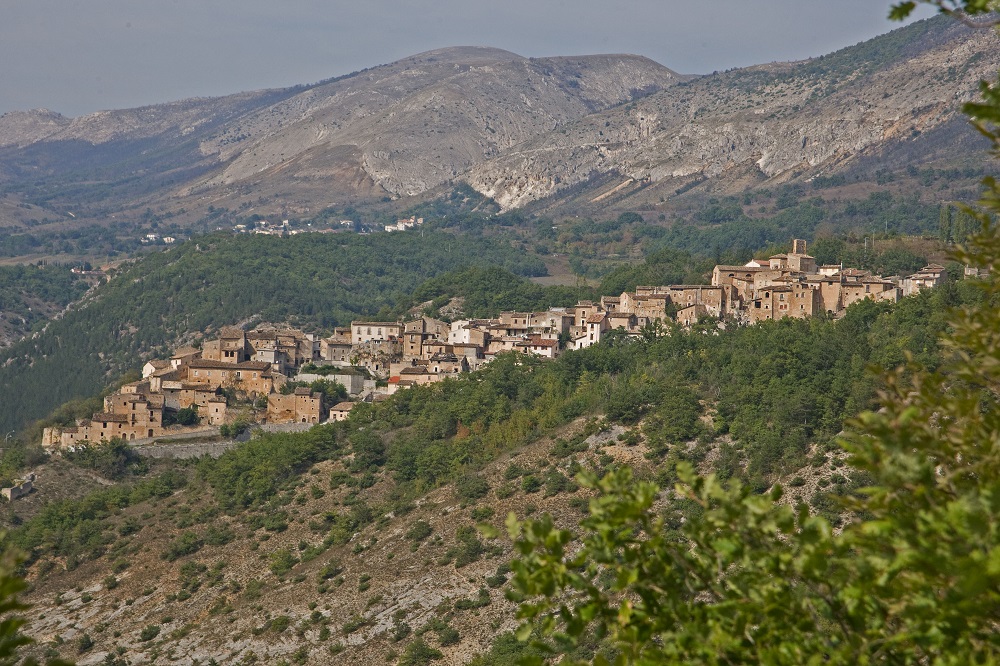Among the regions of Italy, Abruzzo is probably the one which is most loyal to its past. Nobody can deny that even today, the region’s customs, heritage and culture, not to mention its cookery, are still intact, despite the onslaught of industrialization and mass tourism. This means, for example, that local food products are of excellent quality. Here, loyalty to the past is expressed in a great gastronomic tradition.
The people of Abruzzo give prime importance to food, feeling that while it is certainly a joy for the taste buds, it is also the best way to socialising. This attitude is seen in the panarda, a banquet that is a wonderful way to socialise and which food is transformed into an effective means of communication. This is a real food ritual, celebrated in honour of Saint Anthony Abbot.
The most incredible feature of the panarda is the quantity of dishes, which may even be over fifty, and the etiquette which forces the dinners to do honour to the table by eating everything. Its origin is the popular devotion to St Anthony. It is recounted that many years ago a woman left her baby in its cot and went out of the house to go and fetch some water; on the way back, she met a wolf carrying the child between its jaws. The woman invoked St Anthony, at which the wolf put down the child and fled; she then promised to celebrate the Saint’s help every year with a great festival dedicated to him: namely, the panarda.
This is not the only ritual of Abruzzo which brings together magic, spirituality and food. Another example is minestrone delle virtù (soup of the virtues), so called because it uses seven ingredients of each type, like the seven cardinal virtues, and the seven virtues that a good housewife should possess. According to tradition, its preparation requires seven types of vegetables, seven types of meat, seven types of dried pulses, seven types of fresh pulses and seven types of pasta. Even the herbs must be seven in number. Still today, in houses in the area of Teramo (but also in dozens of restaurants), the minestrone is cooked on 1st of May, a custom which derives from celebrations dedicated to the goddess Maia (who the month is named after) in propitiatory rites to ensure the fertility of the land and an abundant harvest.
The provinces of Abruzzo offer a rich sample of landscapes, flavours and cultural features of central and central-southern Italy, which can be seen by driving for little over half an hour, from the coast up into the hills, through historic towns of great interest. In the vast array of eating places, ranging from elegant restaurants to homely trattorias, visitors can run the gamut of Pantagruelian delights. The obvious place to begin is with the extraordinary abundance of pasta dishes, with place of honour going to maccheroni alla chitarra. This type of spaghetti is prepared using a small frame across which metal wires are stretched. A sheet of pasta is passed through this chitarra (guitar), which cuts it into square-section strips. The pasta is cooked in salted water and served with lamb ragù or tomato and basil sauce. Other Abruzzo specialties are related to the region’s sheep farming tradition: lamb, cooked simply, such as in the recipe of the catturro, where the meat is cooked in a large copper pot with fatty bacon, onion and chilli; or sheep’s cheeses. Also worth tasting are the salami and hams, such as mortadella di Campotosto. Those with a sweet tooth must try the confetti (sugared almonds) from Sulmona, not only delicious, but also beautiful, considered by some to be real works of art.
Follow @castaritaHK / Courtesy of the Italian State Tourist Board

